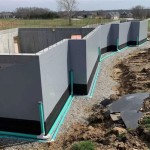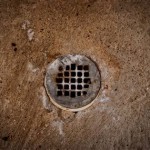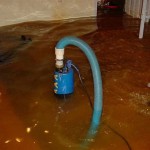Cost to Finish a Basement Bathroom with Rough-In Plumbing
Finishing a basement bathroom is a popular home improvement project, offering valuable additional living space and increasing home value. One significant factor influencing the overall project cost is the existence of rough-in plumbing. Understanding the cost implications of working with existing rough-in plumbing versus installing new plumbing is critical for accurate budgeting.
Rough-in plumbing refers to the initial stage of plumbing installation where the essential pipes and drainage lines are placed within the walls, floors, and ceilings. In a basement designated for future bathroom development, rough-in plumbing is often installed during the home's construction or as a separate pre-emptive project. This foresight can significantly reduce the cost and complexity of finishing the bathroom later.
When rough-in plumbing is already in place, the cost to finish the basement bathroom typically ranges from $6,000 to $15,000. This range is influenced by several factors, including the bathroom's size, the quality of fixtures and finishes chosen, and local labor costs. The lower end of this range might represent a smaller bathroom with standard fixtures and DIY installation of some elements. The higher end accounts for larger bathrooms, premium fixtures, custom tile work, and complete professional installation.
Several key elements contribute to the overall cost. Framing and drywall installation are necessary to create the bathroom walls and enclose the rough-in plumbing. This phase involves material costs for lumber, drywall, and insulation, and labor costs for installation. The complexity of the framing, such as incorporating niches or curved walls, can influence labor costs.
Plumbing work, though simplified by existing rough-in plumbing, still requires connecting fixtures to the established lines. This includes installing the toilet, sink, shower or bathtub, and connecting the necessary supply lines and drainage pipes. A licensed plumber's expertise is typically required for this phase, adding to the labor costs.
Electrical work is essential for powering lighting fixtures, ventilation fans, and potentially heated flooring. This may involve running new wiring or connecting to existing circuits within the basement. Electrical work should always be performed by a qualified electrician, contributing to both material and labor costs.
Flooring, wall finishes, and fixtures represent a significant portion of the budget. Choices range from budget-friendly vinyl flooring and standard fixtures to high-end ceramic tile, marble countertops, and premium faucets. The material costs can vary dramatically depending on the desired level of finish. Installation costs also vary based on the complexity of the chosen materials.
Ventilation is a crucial element in a basement bathroom to prevent moisture buildup and mold growth. Installing a properly sized and vented exhaust fan is essential. The cost of the fan and the complexity of venting it to the exterior can influence this part of the budget.
In contrast, finishing a basement bathroom without existing rough-in plumbing significantly increases the overall cost. The range typically expands to $10,000 to $25,000, or even higher. The additional cost stems from the necessity of breaking into the concrete floor to install drainage lines and running new supply lines to the bathroom location.
The process of installing rough-in plumbing in a finished basement necessitates concrete cutting and excavation, adding significant labor and material costs. This process also introduces complexities related to navigating existing infrastructure within the basement ceiling, impacting both time and expense.
Once the new rough-in plumbing is installed, the finishing process mirrors that of a bathroom with existing rough-in. Framing, drywall, plumbing fixture installation, electrical work, flooring, wall finishes, and ventilation all contribute to the overall cost, as described previously.
Permitting is a crucial aspect of any bathroom renovation project. Local building codes dictate specific requirements for plumbing, electrical, and ventilation systems. Obtaining necessary permits ensures compliance with these regulations and safeguards the homeowner. Permit fees vary by location and contribute to the overall project cost. Inspections are typically required at various stages to ensure compliance.
Careful planning and budgeting are essential for a successful basement bathroom finishing project. Obtaining multiple quotes from reputable contractors, specifying detailed material selections, and clearly defining the scope of work are crucial steps. Understanding the cost implications of pre-existing rough-in plumbing versus installing new plumbing allows homeowners to make informed decisions and manage their budget effectively.

Cost To Add A Basement Bathroom Bright Green Door

How To Finish A Basement Bathroom Pex Plumbing
How Much Does It Cost To Install A Bathroom In The Basement Quora

Basement Bathroom Cost These 5 Items Will Determine Your

Cost To Add A Basement Bathroom Bright Green Door

Cost To Add A Basement Bathroom Bright Green Door

Pros And Cons Of Adding A Basement Bathroom Remodeling

Cost To Add A Basement Bathroom Bright Green Door

No Rough In Problem Our Diy Bathroom Basement From A Closest Cheap And Beautiful This Life

How To Finish A Basement Bathroom With Rough In Plumbing
See Also








